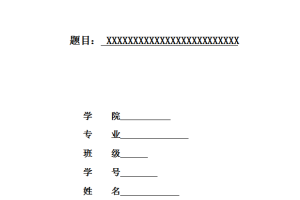基于FPGA点阵图形显示系统的设计与实现
摘 要
随着现代科技的高速发展,现代信息的人机交换发生了重大的变化。数字化、智能化、简洁明了的显示系统在人们的日常生活中发挥着十分重要的作用[1]。利用FPGA来驱动液晶和数码管显示模块,对时序和驱动芯片各引脚的控制是其核心技术,具有很高的可靠性和灵活性。因此对于基于此结构的智能设备的研究具有重要意义。显示系统的设计,利用DS1302芯片产生实时时间,通过数码管显示。通过五位按键可以对时间进行设置和调整,同时还具有定时报警功能。当上电时,16×16液晶会显示初始化信息,然后对提前保存在ROM中的图片进行循、字符、字符为“毕业设计课题基于FPGA显示系统”这几个字的功能。
关键词 显示系统/FPGA/16×16液晶/DS1302
ABSTRACT
More and more advanced science and technology , There is a big difference between modern machine and traditional machine。Digital, intelligent, clear and concise display system in People’s Daily life play a very important role. Using FPGA to drive LCD and digital tube display module, to control the timing of each pin and driver chip is the core technology, has the very high reliability and flexibility[11]. So based on the structure of intelligent device for research is of great significance. The design of the display system, synchronous time using DS1302 chip, through digital tube display. Through the five keys to set up and adjust the time, at the same time also have regular alarm function[12]. When power on, 16×16 LCD will display initialization information. And then to the images stored in ROM in advance to loop scanning, display dynamic effect. Show time, characters, images, animation, function.
KEYWORDS Display system, FPGA , 16×16, DS1302
目 录
2.1 EDA技术…………………………………… 3
2.1.1 EDA技术的概念及范畴………………………………… 3
2.1.2 EDA技术的基本特征………………………………….. 3
2.1.3 EDA历史发展回顾……………………………………. 3
2.2 硬件描述语言Verilog…………………………. 4
2.2.1 Verilog语言简介……………………………………. 4
2.2.2 用Verilog设计电路的设计流程………………………… 4
2.3 FPGA和Quartus II简介……………………………… 5
2.3.1 FPGA简介…………………………………………. 5
2.3.2 Quartus II简介…………………………………….. 5
2.4 数码管和16×16显示系统设计的概述…………….. 6
3.3 各组成模块及程序设计……………………………….. 7
3.3.1 DS1302&数码管模块设计………………………………. 8
3.3.2 按键模块设计…………………………………….. 11
3.3.3 报警模块设计…………………………………….. 14
3.3.4 呼吸灯模块设计……………………………………. 17
3.3.5 16×16液晶模块设计……………………………….. 18
3.4顶层电路结构的Verilog HDL实现……………………. 22
4 显示系统的仿真分析与电路实现…………………………. 25
4.1.1 数码管模块的仿真及分析……………………………… 25
4.1.2 16×16模块的仿真及分析……………………………… 25
4.2 基于FPGA的硬件测试……………………………….. 27
4.2.1 FPGA实验开发系统概述……………………………… 27
4.2.2 硬件配置…………………………………………. 27
4.2.3 硬件测试…………………………………………. 28





